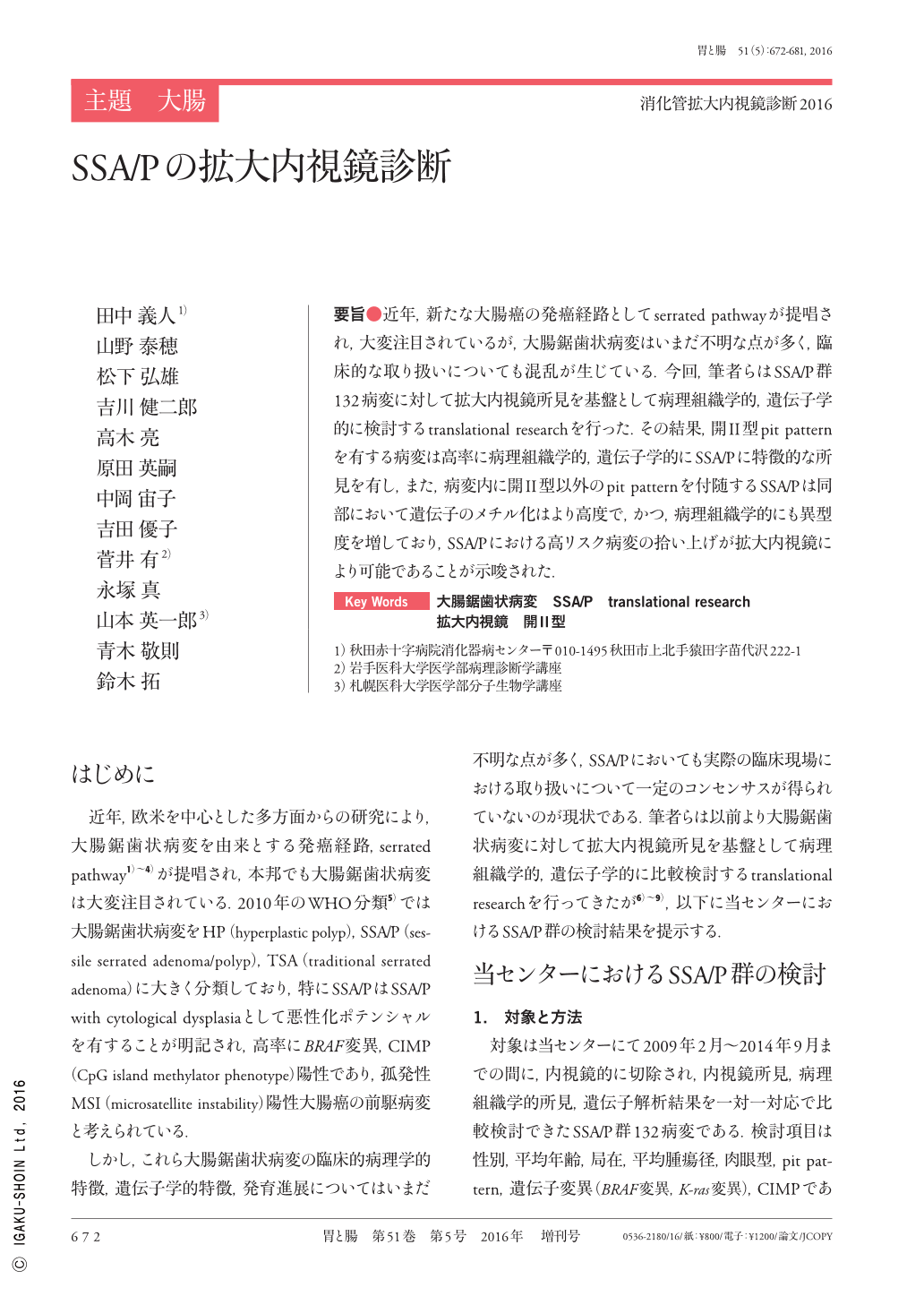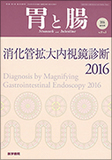Japanese
English
- 有料閲覧
- Abstract 文献概要
- 1ページ目 Look Inside
- 参考文献 Reference
- サイト内被引用 Cited by
要旨●近年,新たな大腸癌の発癌経路としてserrated pathwayが提唱され,大変注目されているが,大腸鋸歯状病変はいまだ不明な点が多く,臨床的な取り扱いについても混乱が生じている.今回,筆者らはSSA/P群132病変に対して拡大内視鏡所見を基盤として病理組織学的,遺伝子学的に検討するtranslational researchを行った.その結果,開II型pit patternを有する病変は高率に病理組織学的,遺伝子学的にSSA/Pに特徴的な所見を有し,また,病変内に開II型以外のpit patternを付随するSSA/Pは同部において遺伝子のメチル化はより高度で,かつ,病理組織学的にも異型度を増しており,SSA/Pにおける高リスク病変の拾い上げが拡大内視鏡により可能であることが示唆された.
In recent years, the serrated pathway has been reported to be one of the developmental pathways in colon carcinoma. SSA/P has attracted attention as one of the precursors of sporadic colon carcinoma with microsatellite instability(MSI); however, in fact, many SSA/Ps do not undergo modifications. Furthermore, it is impossible to resect all SSA/Ps discovered. Therefore, it is important to investigate the best way to decipher which SSA/Ps must be resected.
We pathologically and genetically examined 132 SSA/P lesions based on magnifying endoscopy findings.
Our examination suggests that Type II-open pit is specific to SSA/Ps with a BRAF gene mutation and CpG island methylator phenotype(CIMP). In addition, in the case of an additional pit appearing on an already existing Type II-open pit, there is a high probability that the lesion is a gene hyper-methylation SSA/P with cytologic dysplasia and should be resected.

Copyright © 2016, Igaku-Shoin Ltd. All rights reserved.


